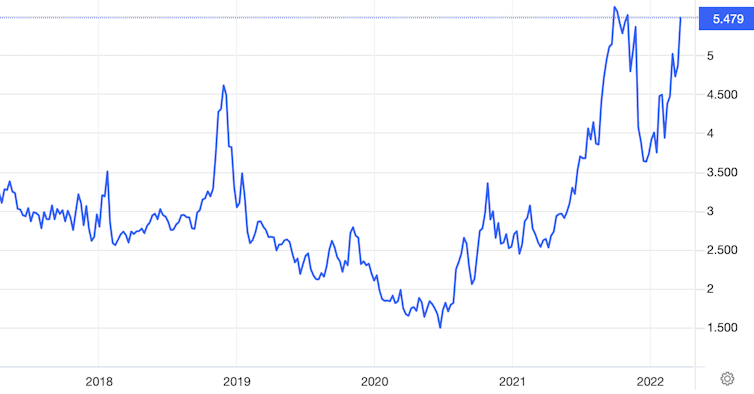Putin’s roubles-for-gas demand is no serious threat to US dollar reserve status – here's why
- Written by Kim Kaivanto, Senior Lecturer in Economics, Lancaster University

President Vladimir Putin’s demand[1] that “unfriendly countries” henceforth pay for Russian gas in roubles has had several immediate effects. With the Europeans given one week to switch to paying in the Russian currency, it has driven up the price of natural gas, making it more expensive for them to maintain the sanctions regime.
The rouble has strengthened against the US dollar since the announcement from ₽107 to ₽99. And if European nations accede to Russia’s terms, the demand for roubles will increase and accordingly further strengthen the currency’s value in the foreign exchange market.
The moves put pressure on European countries to backslide on enforcing financial sanctions, since using roubles would presumably force them to buy the currency from sanctioned Russian banks. And it can be seen as a ploy to split Germany and Italy off from the sanctions alliance, since they are particularly dependent on Russian gas.
The early indications are that divide and rule may not be working: the Germans have announced they will reduce their dependency[2] on Russian gas to as little as 10% (compared to over 50% today) by summer 2024. But since Russia is implicitly threatening to cut off Europe’s gas supply immediately unless it starts paying in roubles, the more pressing question is what the ramifications look like today.
Natural gas price (UK spot, pence/therm)







